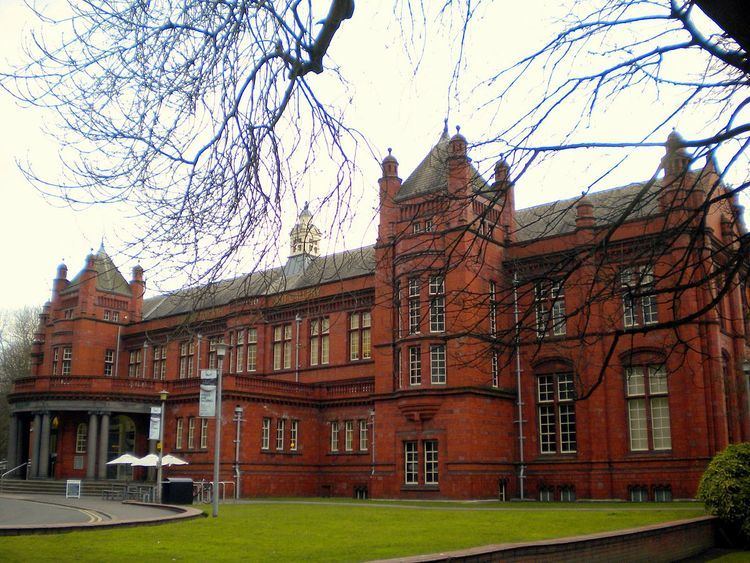Established 1889 Director Maria Balshaw Owner University of Manchester | Opened 1908 Phone +44 161 275 7450 | |
 | ||
Former name The Whitworth Institute and Park Location Manchester, United Kingdom Website www.whitworth.manchester.ac.uk Address Oxford Rd, Manchester M15 6ER, UK Hours Open today · 10AM–5PMSunday10AM–5PMMonday10AM–5PMTuesday10AM–5PMWednesday10AM–5PMThursday10AM–9PMFriday10AM–5PMSaturday10AM–5PMSuggest an edit Founder Robert Dukinfield Darbishire Similar Manchester Art Gallery, Manchester Museum, Museum of Science and Indus, John Rylands Library, People's History Museum Profiles | ||
Re opening of the whitworth art gallery february 2015
The Whitworth Art Gallery is an art museum in Manchester, England, containing about 55,000 items in its collection. The museum is located in Whitworth Park south of the Oxford Road campus of the University of Manchester. Since 2006, the director of the gallery is Dr Maria Balshaw.
Contents
- Re opening of the whitworth art gallery february 2015
- Tour of whitworth art gallery
- History
- 2003 theft
- Architecture
- Refurbishment and extension
- Collections
- References
Tour of whitworth art gallery
History
The gallery was founded in 1889 by Robert Dukinfield Darbishire with a donation from Sir Joseph Whitworth, as The Whitworth Institute and Park. The first building was completed in 1908. In 1958 the gallery became part of the Victoria University of Manchester.
In October 1995 the mezzanine court in the centre of the building was opened. The new gallery, designed chiefly for the display of sculpture, won a RIBA regional award. In 2010 the art gallery received 172,000 visitors, making it one of Greater Manchester's ten most-visited tourist attractions.
2003 theft
On Saturday 26 April 2003, three paintings — Van Gogh's The Fortification of Paris with Houses, Picasso's Poverty and Gauguin's Tahitian Landscape – were stolen from the gallery. They were later found rolled up in a nearby public toilet and were subsequently put back on display.
Architecture
The Grade II listed gallery was built between 1895 and 1900 in a free Jacobean style to the designs of J.W. Beaumont. The gallery consisting two storeys and a basement is constructed of red brick with bands and dressings of matching terracotta and has green slate roofs. Its nine-bay main range has two towers and a large projecting semi-circular porch with a screen of paired stone Ionic columns and a stone frieze below a balustraded parapet.
Refurbishment and extension
An architectural competition was launched by RIBA Competitions to design an extension in 2008 and funding was secured in February 2011. In September 2013 the gallery closed for refurbishment and extension works. The £15 million redevelopment was supported by the Heritage Lottery Fund and the University of Manchester. The refurbishment works, undertaken by architects MUMA envisaged the gallery reopening to the public by summer 2014, but complications have delayed the opening.
The development includes expanded gallery areas, a learning studio, study centre, an art garden and cafe. Developers have constructed a glass, stainless steel and brick extension consisting of two wings which extend into Whitworth Park from the back of the gallery building. The wings are connected by a glass promenade. The extension means the gallery is a third larger than previously.
The extension, which opened on 14 February 2015 doubles the gallery's public space. It will provide more space for displaying the 55,000 items in the gallery's collection and link the building to Whitworth Park.
The refurbishment and extension work resulted in the development winning a RIBA National Award in 2015 and subsequently being shortlisted for the RIBA Stirling Prize. The Whitworth won the Museum of the Year award in 2015.
Collections
The Whitworth has notable collections of watercolours, sculptures, wallpapers and textiles. The gallery focuses on modern artists, and the art collections include works by Henry Moore, Barbara Hepworth, Ford Madox Brown, Eduardo Paolozzi, Francis Bacon, William Blake, David Hockney, L. S. Lowry, Paul Gauguin, Vincent van Gogh and Pablo Picasso, and a fine collection of works by J. M. W. Turner. One of its most famous works is the marble sculpture Genesis (1929–31) by Sir Jacob Epstein.
